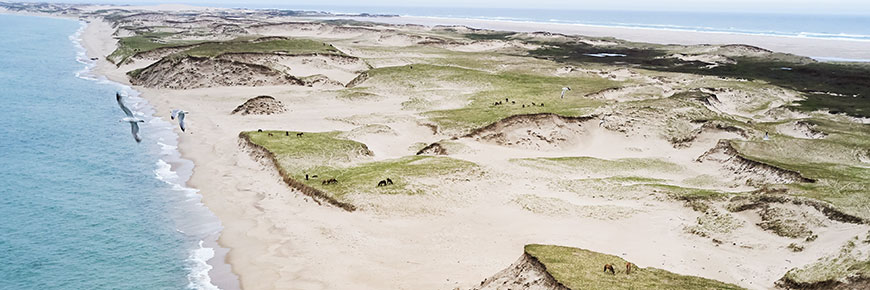
Nature and science
Sable Island National Park Reserve
The forces of nature dominate all life on Sable Island. Explore ongoing research and monitoring projects. Learn more about the plants and animals such as horses, grey seals, birds, fish, and invertebrates that live in this unique environment.
Science and conservation
Conservation research projects include Fences in the Sand and the Grey Seal Count.
Animals
Animals include wild horses, grey seals, birds, fish, invertebrates, but not walrus.
Plants
Plants include heath-type vegetation, sandwort, marram grass.
Environment
Beaches, dunes, sandspits, freshwater, temperate climate.
Research
Parks Canada uses the online national Research and Collection Permit System (RCPS) to manage research with partners.
Discover Sable Island National Park Reserve
Video by Brinton Photography
Far out in the North Atlantic sits Sable Island National Park Reserve, a wild and windswept island of sand.
This crescent shaped island of dynamic rolling sand dunes is home to a wild horse population, the world’s largest breeding colony of grey seals, and species that are found here and nowhere else on earth.
The forces of nature dominate all life here, past, present, and future. Sable Island National Park Reserve is a testament to adaptation and survival, a place to witness change and marvel at survival in an unlikely environment.
- Date modified :